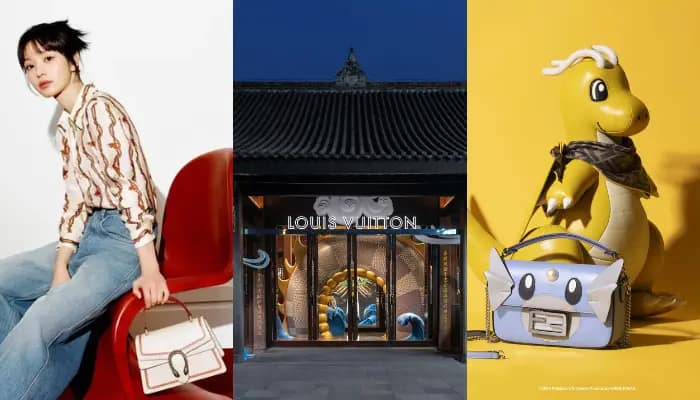Hong Kong – As the upcoming Lunar New Year brings out campaigns from brands that offer unique and exclusive experiences, the fashion industry is no stranger to capturing the wave of celebration, according to the latest data from Euromonitor.
Lisa Hong, consultant at Euromonitor International, said that this approach is a straightforward and highly effective method of engaging a loyal consumer base in Asia. While not always directly translating into immediate sales, these strategies will help brands to enhance their image and rapport with local consumers.
To give an example, Hong pointed to luxury brand Fendi’s 2024 collaboration with POKÉMON incorporating popular dragon characters like ‘Dragonair’, ‘Dratini’ and ‘Dragonite’, with millennials and Gen Z consumers globally, eagerly lining up for hours in front of pop-up stores showcasing their favourite characters or artists to enjoy the unique experience.
It is also worth noting that with the boom brought about by Lunar New Year campaigns contributed a rise in personal luxury spending in East Asia, with Hong Kong seeing a rebound of 23.2% in personal luxury spending by the end of 2022 – the biggest rebound in Asia Pacific. China is also affected by this, as luxury brands are also looking to invest more in the Chinese shopper at home, the mainland and on the tax-free-shopping island of Hainan rather than travelling abroad.
Talking about this, Fflur Roberts, head of luxury goods at Euromonitor International, said, “While the path of economic recovery in China remains highly uncertain, price growth is projected to gather pace in 2024 on the back of accelerating consumer spending and reviving tourism flows. Indeed, the future overall for luxury goods in China nonetheless continues to look bright for those looking to capitalise on high-spending, digitally savvy and social media-friendly Chinese consumers.”
“By embracing the cultural significance of events like Lunar New Year and incorporating these elements into their marketing and product strategies, luxury brands can enhance their appeal and forge stronger connections with consumers, especially Chinese consumers during festive seasons both at home and abroad among the wider consumers in East and Southeast Asia,” he added.



